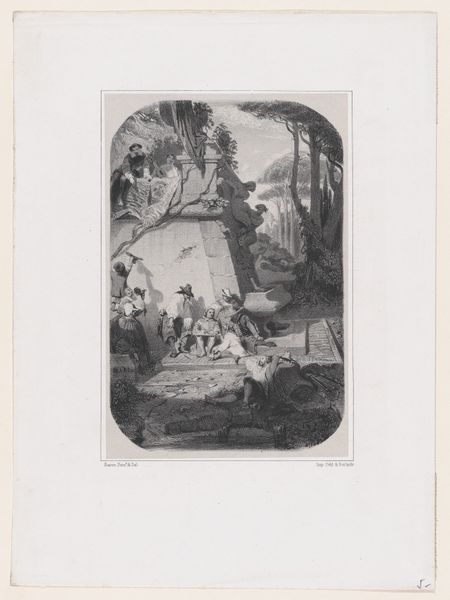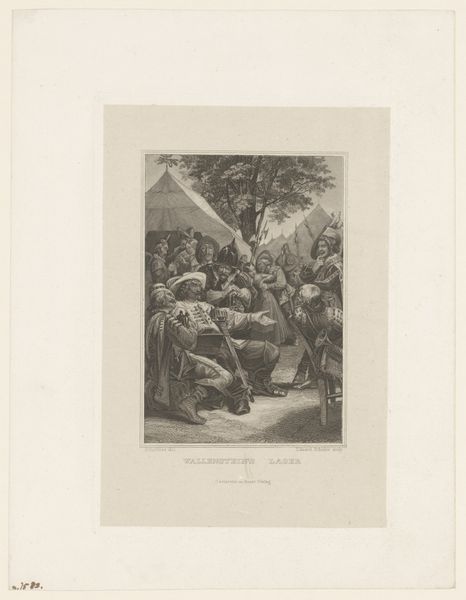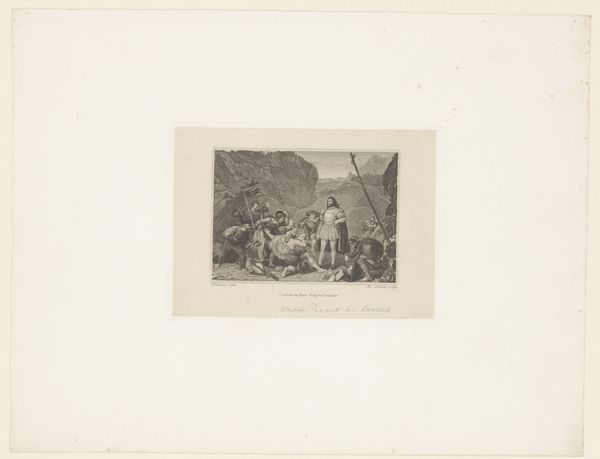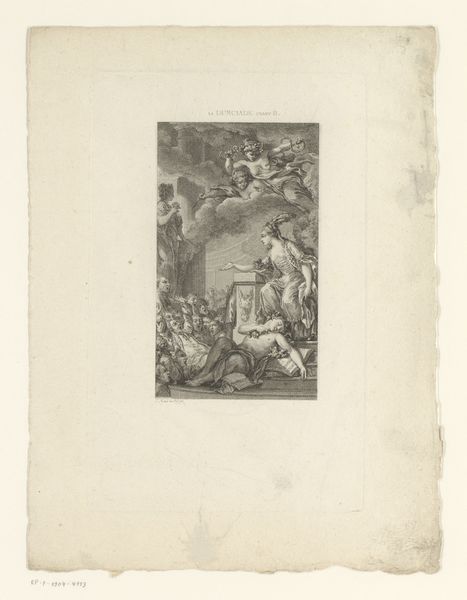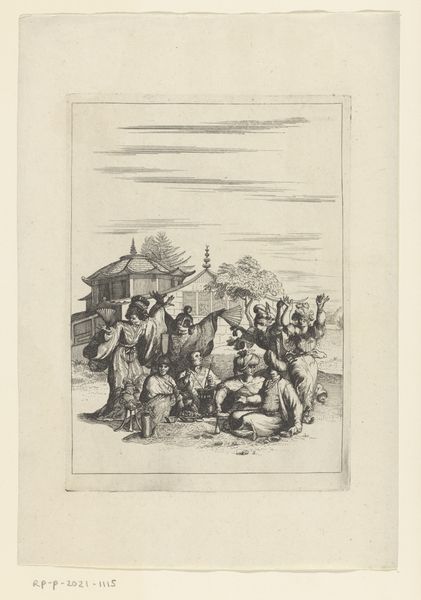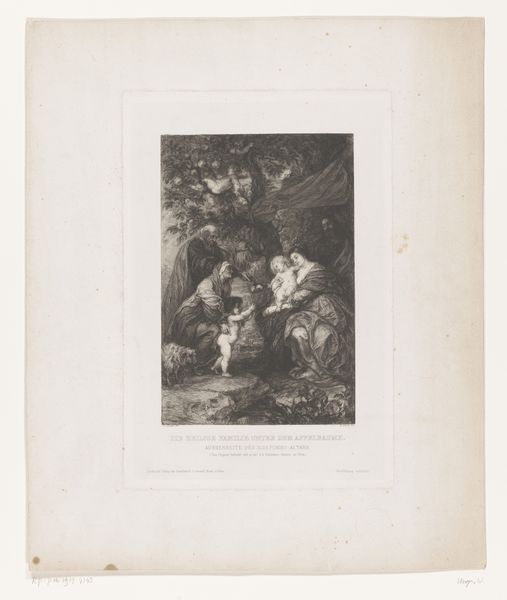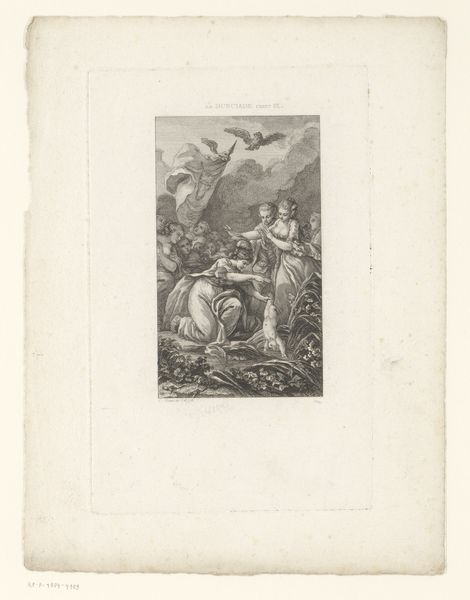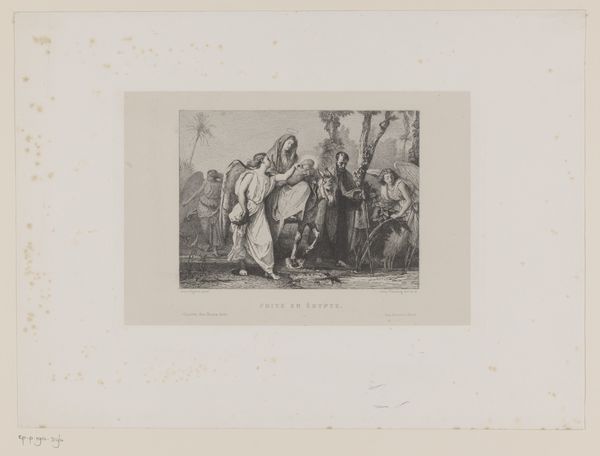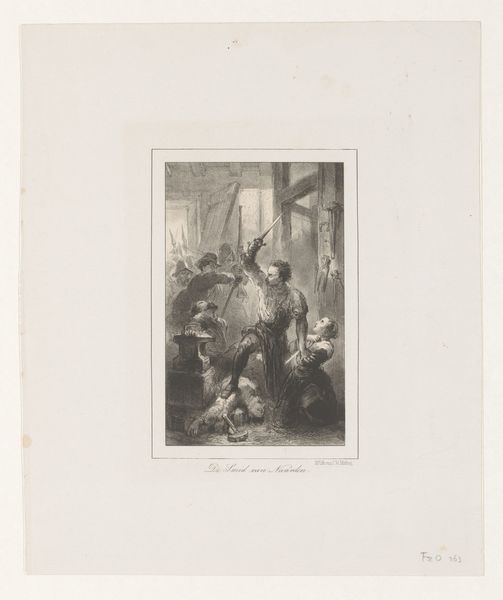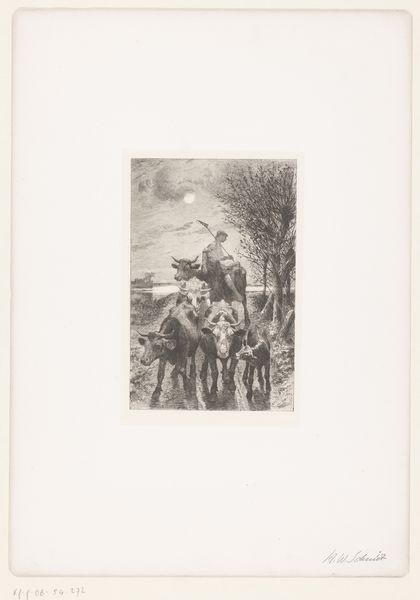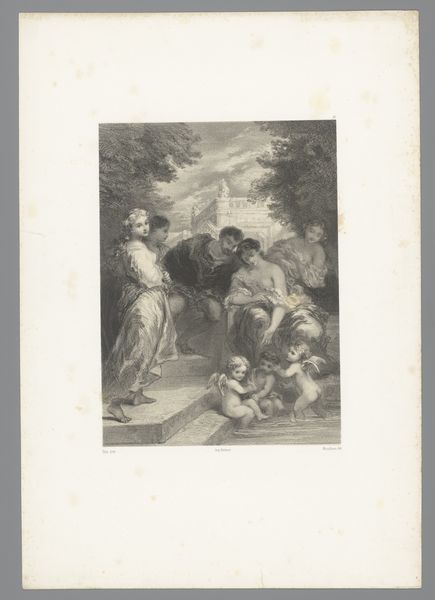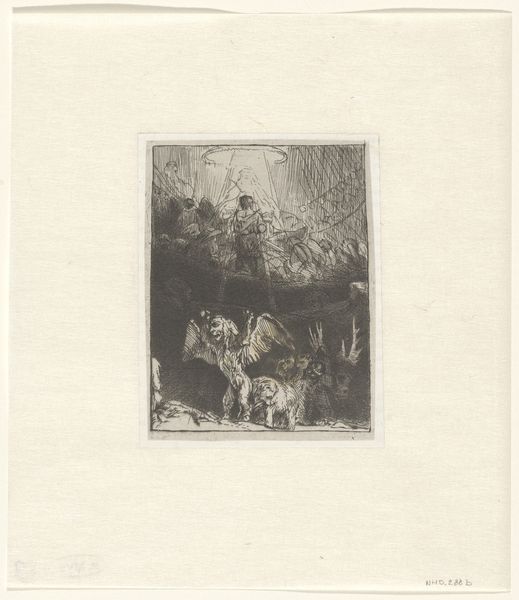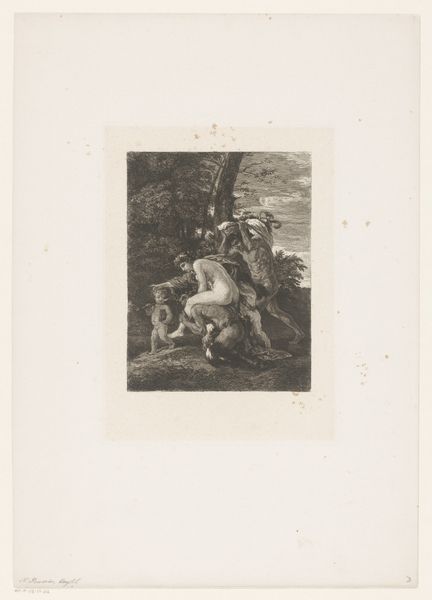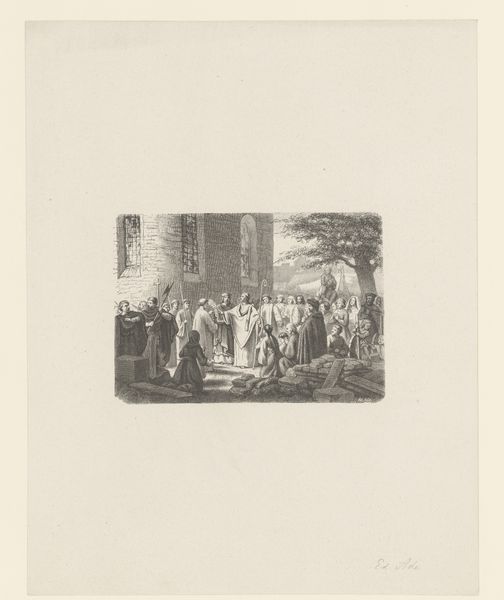
print, etching, paper, engraving
# print
#
etching
#
landscape
#
figuration
#
paper
#
line
#
genre-painting
#
academic-art
#
engraving
#
realism
Dimensions: height 434 mm, width 330 mm
Copyright: Rijks Museum: Open Domain
Editor: This is "Bloemenmarkt," an etching by Albert Glibert from 1873. It depicts a busy flower market. I’m immediately struck by the detail – you can almost feel the bustle of the crowd. What underlying themes do you observe? Curator: The flowers themselves speak volumes. Notice how they are presented not just as objects of beauty but as items of commerce, changing hands, creating relationships, a subtle reflection of social exchange. Look closely at who is buying and selling. What do their clothes tell us about their status? Consider the unspoken language between the classes during that era. Editor: It does feel very performative, almost like everyone is putting on a show. Is this a common element in art from that period? Curator: Absolutely. It echoes the genre painting prevalent during the period, with the detailed dress codes of each rank. There is always a moral lesson and story underlying genre paintings. Have you ever considered the cultural symbolism inherent in flower markets themselves? Historically, they can be places of courtship, transaction, clandestine exchanges, all carefully coded within visual languages. Do you perceive any of that complexity here? Editor: I can definitely see those tensions, especially between the different social classes depicted. Now that you point it out, there’s almost a feeling of suppressed emotion amidst all the vibrant detail. Curator: Exactly. What looks initially like a snapshot of everyday life becomes a richer text to interpret, layered with symbolic meanings and historical context, once we start asking deeper questions about visual imagery. Editor: It's amazing how much I missed at first glance. I now notice things I would have otherwise not even considered!
Comments
No comments
Be the first to comment and join the conversation on the ultimate creative platform.
